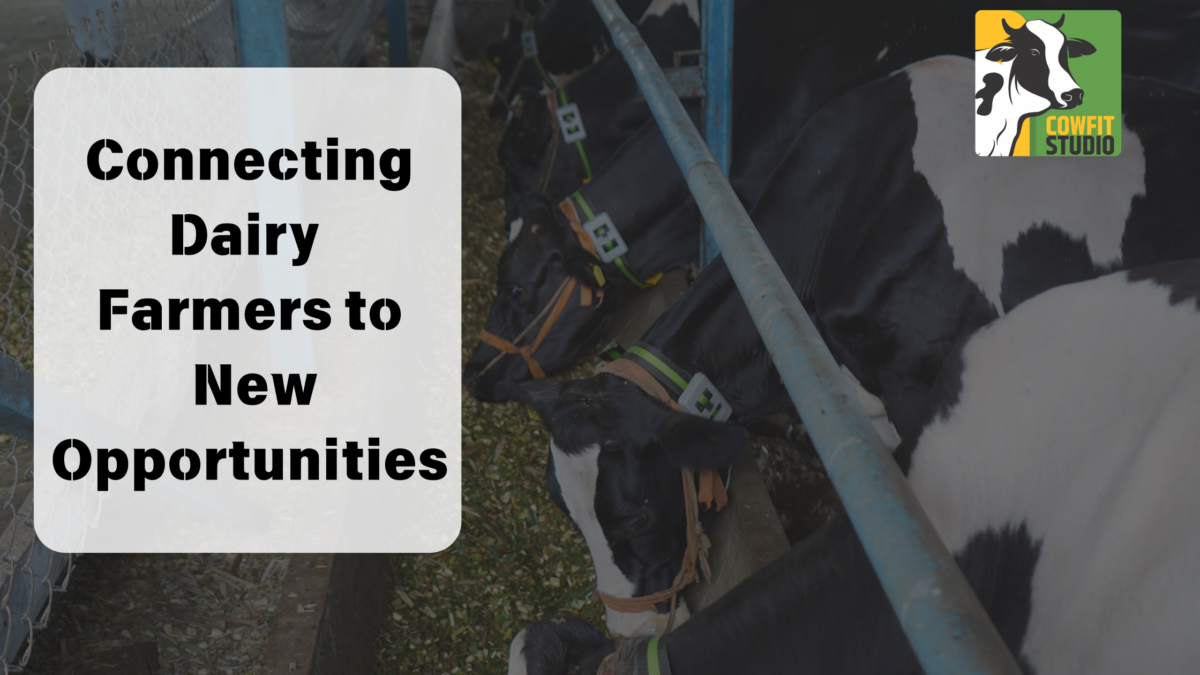The dairy industry is evolving rapidly, offering dairy farmers new opportunities to enhance their operations and expand their market reach. As global demand for dairy products continues to grow, innovations in technology, marketing strategies, and sustainable practices provide pathways for farmers to thrive in a competitive landscape. Here, we explore several key opportunities that dairy farmers can leverage to drive growth and success.
1. Embracing Technology
a. Precision Farming
Precision farming technologies, such as GPS-guided equipment, automated milking systems, and drones, are transforming dairy farming. These tools enable farmers to monitor and manage their herds more efficiently, optimize feed usage, and improve overall productivity. Precision farming not only enhances yield but also reduces costs and environmental impact.
b. Health Monitoring Solutions
Innovations like Ayushman Cowfit, a sensor-based health monitoring solution, allow farmers to track the health and well-being of their cattle in real time. These systems provide valuable data on factors such as activity levels, rumination, and temperature, enabling early detection of health issues and timely intervention. By ensuring the well-being of their herds, farmers can maintain high milk production and quality.
2. Expanding Market Reach
a. E-commerce Platforms
The rise of E-commerce presents a significant opportunity for dairy farmers to expand their market reach. Online platforms allow farmers to sell their products directly to consumers, bypassing traditional supply chains and increasing profitability. By creating an online presence and leveraging digital marketing strategies, farmers can tap into a broader customer base and boost sales.
b. Direct-to-Consumer Sales
In addition to E-commerce, farmers can explore direct-to-consumer sales models, such as farmers’ markets, subscription services, and farm-to-table initiatives. These models enable farmers to establish a direct connection with consumers, fostering loyalty and trust. Offering value-added products, such as artisanal cheeses, yogurt, and butter, can further enhance profitability and brand differentiation.
3. Sustainable Practices
a. Environmental Stewardship
Sustainability is becoming increasingly important in the dairy industry. Consumers are more conscious of the environmental impact of their food choices, and regulatory pressures are mounting. By adopting sustainable practices, such as regenerative agriculture, waste management, and renewable energy, farmers can reduce their carbon footprint and appeal to eco-conscious consumers.
b. Cattle Welfare
Ensuring high standards of Cattle welfare is not only ethical but also beneficial for business. Consumers are willing to pay a premium for products from farms that prioritize cattle well-being. Implementing practices that promote the health and comfort of cattle, such as providing ample space, proper nutrition, and stress-free environments, can enhance milk quality and market appeal.
4. Collaboration and Networking
a. Cooperatives and Associations
Joining cooperatives and industry associations can provide dairy farmers with valuable resources, knowledge, and support. These organizations offer access to training, funding opportunities, and collective marketing efforts. By collaborating with other farmers and stakeholders, dairy farmers can strengthen their bargaining power and share best practices.
b. Research and Development
Investing in research and development is crucial for staying ahead in the dairy industry. Collaborating with academic institutions, government agencies, and private enterprises can lead to innovations in breeding, nutrition, and disease management. By staying informed about the latest advancements and integrating them into their operations, farmers can enhance productivity and competitiveness.
5. Financial Support and Education
a. Grants and Subsidies
Various government and non-governmental organizations offer grants and subsidies to support dairy farmers. These financial aids can help farmers invest in new technologies, infrastructure, and sustainable practices. Keeping abreast of available funding opportunities and applying for relevant programs can provide crucial financial support for growth.
b. Continuous Learning
The dairy industry is dynamic, and continuous learning is essential for success. Farmers should seek out educational opportunities, such as workshops, online courses, and industry conferences, to stay updated on best practices and emerging trends. Knowledge sharing and networking with peers can also provide valuable insights and inspiration.
Conclusion
The dairy industry is ripe with opportunities for farmers willing to adapt and innovate. By embracing technology, expanding market reach, adopting sustainable practices, fostering collaboration, and seeking financial support and education, dairy farmers can navigate the challenges of the modern market and achieve long-term success. The future of dairy farming lies in the ability to connect with new opportunities and continuously evolve to meet the demands of an ever-changing industry.


